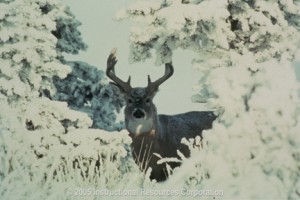What a wonderful opportunity we have as educators today to help our students develop a “respectful mind” with the many possibilities that exist for reaching out to students around the globe.
Currently my students, especially the older ones, are becoming excited about communicating with other students through blogging. Though the majority of the students participating in the Bloggers’ Challenge come from USA, Australia, New Zealand, and Canada, there is still a sprinkling of other countries around the world. There are so many avenues to explore with this. We are working on being “respectful” commenters, and addressing the writer’s thoughts and goals, rather than noticing their misspellings or bad grammar (and of course aren’t WE the perfect ones…now that deserves an LOL if anything does.)
I have made connections with a third grade teacher in Saskatchewan, Canada. Her students, like mine, are new bloggers. We are planning to work together on some shared activities, though we are both feeling our way at first. I have communicated with her (Leah Dewhurst) via Skype and email and so far we are giving each other time  to get the students adjusted to the blog site, but hope to try VoiceThread in the near future. There is so much my students can learn, not only about Canada, but about the native people to that area, the climate, even variations in the English language. We are all excited at what may unfold during the year. I only have one web cam, but I hope to make use of it during our interaction with the Canadian class, which is 2 hours behind us time wise.
to get the students adjusted to the blog site, but hope to try VoiceThread in the near future. There is so much my students can learn, not only about Canada, but about the native people to that area, the climate, even variations in the English language. We are all excited at what may unfold during the year. I only have one web cam, but I hope to make use of it during our interaction with the Canadian class, which is 2 hours behind us time wise.
Another project that would help in cultural understanding with our Canadian friends is creating a digital story about our school and our routines, our town and local attractions. That was an activity mentioned in the Julene Reed post, and one we could certainly take on. Sharing this with students in another country and having them share with us would be enriching, not only for the students, but for us as teachers as well. Students first instincts may be to laugh at something that looks totally different than what they are used to. But that reaction could lead to some interesting discussions, and the chance to appreciate that there may be no best way, just many different ways.
Ms. Dewhurst adds much more media to her posts than I do, so I will be trying to learn some new tools to use as well. This Thursday, October 8, I plan to take my third graders on a little “trip” to her posts from this school year, such as her post on Elders that visited their classroom or field trips they have taken. We will discuss things that we can share with our soon to be Canadian friends. I am at a disadvantage in this situation since Ms. Dewhurst is their regular classroom teacher and I see my third graders for 45 minutes per week. Therefore, this is a project in which I need to enlist their homeroom teacher as a partner, so that they get the full benefits of this interaction. I cannot be a world unto myself in the computer lab, and I shouldn’t be. What I need to do is support their curriculum and so the scope of this project will widen as the third grade teacher comes (is dragged) on board.
 After following the link to the Global Dreamers Webquest, I am anxious to discuss with the 6th grade teacher how we can get involved with this class from Israel. I need to spend some time reviewing the possibilities on that site, but with the sixth grade studying ancient civilizations in the Middle East and studying the Israelites in the Old Testament in their religion class, there is so much potential for increasing their awareness of this region of the world and the culture of young people who turn out to have much more in common with them than they may imagine.
After following the link to the Global Dreamers Webquest, I am anxious to discuss with the 6th grade teacher how we can get involved with this class from Israel. I need to spend some time reviewing the possibilities on that site, but with the sixth grade studying ancient civilizations in the Middle East and studying the Israelites in the Old Testament in their religion class, there is so much potential for increasing their awareness of this region of the world and the culture of young people who turn out to have much more in common with them than they may imagine.
One sixth grader wrote:
Hi, my name is Ronya K.
I like a lot of rock and rock punk bands like Linkin Park, Simple Plan, Paramore, Nickelback, System of a down, Blink 182 and fall out boy. I like to see a lot of movies and ride scary books. My mum is a single parent and I see my dad to times in year and I miss him but it is the reality. I’ve got two big sisters one is a broadcaster at MTV, her name is Bitanya and the other one is an actor and model, her name is Nizhna.
I like skateboarding but my mum thinks that skateboarding is dangerous.Bye!
I am surprised to note how much personal information about the students exists on that site – first and last names, photos, even parents names and in the case of one girl I saw, her street as well as her town. We are much more guarded with our students’ privacy. That would be something I would love to discuss with the teacher running the project.
All in all I am excited about being more aware of the opportunities for global collaboration in which my students might engage. Perhaps these activities we are involved in will help to develop the “respectful mind” in these young people. As Gardner notes, “During early years of school, such issues [value of respect, cost of respect, cost of disrespect] are best approached through experiences in which members of different groups work together on common projects, and come to know one another first hand.” My hope is that the seeds of respect for cultural differences will take root (along with those seeds of creativity).
Side note: At the time I wrote this post I was basing it on the reading assignments listed in the introduction for this week’s module, namely the Julene Reed post and “The Respectful Mind”. It occurred to me afterward that the references to “ethical mind” meant that chapter was part of the reading although it was not listed. Hence, no references to that chapter exist in this post, though my discussion comments do reflect both chapters.
Image Citations
A menorah in Jerusalem, Israel.. IRC. 2005.
Discovery Education. 6 October 2009
<http://streaming.discoveryeducation.com/>
White-tailed deer in Saskatchewan, Canada.. IRC. 2005.
Discovery Education. 6 October 2009
<http://streaming.discoveryeducation.com/>
